Well, another Earth Day went by and even though California claims to be the global leader when it comes to Renewable Energy, we all don’t see much change and our energy bills keep going up and up. So, I have been wondering: What do other states do? Who is the world leader when it comes to Renewable Energy?
Who are the leaders in the Renewable Energy market in the United States?
That’s a difficult question to answer, but I found that California claims to be the global leader when it comes to Renewable Energy. But is that really true or is it just marketing? I am not sure. So, I did some research and found that Hawaii is having a very progressive approach when it comes to Renewable Energy. The Hawaiian state has been pushing for 15% of Renewable Energy by 2015 which is in alignment with many other states. However, the current numbers show them at 21% which is impressive and way ahead of schedule. Furthermore, the Hawaiian Electric Companies are aiming for 65% by 2030 while reducing customer bills by 20% which is even more impressive. Especially, if one knows that Hawaii is also one of the most fuel-dependent states in the nation. So, what is their plan? Are they doing anything different than other states? I am not sure on that, but I do see the state government, corporations and the general public aligned in their interest to reduce the import of energy to Hawaii.
Here are some examples of the Hawaiian plan in motion:
- Wind & Solar Power Plants
Hawaii currently sees wind and solar power as it’s primary Renewable Energy providers. Here is some good information from GE with some impressive numbers for a small state like Hawaii.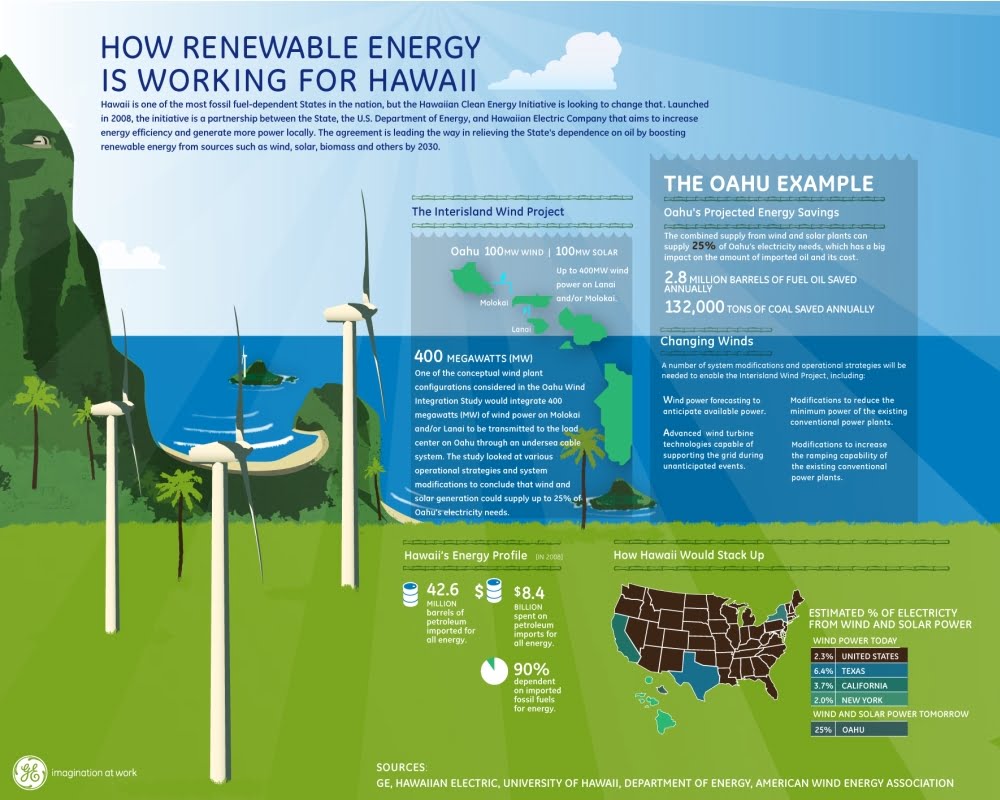
- Geothermal Energy Plants
It seems that Hawaii would be an ideal place for Geothermal Plants, but I could only locate one geothermal plant located in Puna (south of Hilo) on the Big Island. It should be noted that the plant is facing some local resistance (see sources) who is concerned about the underlying technology and its safety.
- Ultra-Efficient Home Design
The current offerings include solar water heating and solar electricity. This is offered in other states as well, but it seems that Hawaii’s climate makes it more effective for home owners. I also found some new solutions that offer home owners to locally store their overage electricity for night time usage.
Other features include the ability to use solar power to recharge an electric car which is a smart move because it is safe to assume that electric cars will sell well in Hawaii. Obviously, the main issue of having a limited range doesn’t really apply to Hawaii.
What is California doing wrong?
On a first look Hawaii isn’t doing much else than other states. However, there are some small details that might jive better with customers. For example, Hawaiian Electric Companies is touting a 20% reduction of customer bills by 2030 although that doesn’t mean much because Hawaiian customers pay 2 – 3 times more than customers in other states. Hawaiian customers are also offered to locally store and combine energy sources as they seem fit. In fact, Hawaii has plenty of homes that are completely off the grid and it appears that this is a growing trend.
So, it seems that Hawaii has managed to create a program that is not only effective, but also well received by customers. What is California doing wrong? Well, for starters there used to be a strong resistance against customers storing solar power in batteries. When I asked a local representative of PG&E California about this a few years ago, I was outright told that all extra energy has to be returned to the grid without reimbursement for the home owner. However, I have been reading that this somewhat changed with some lawsuits in 2014 (see sources below). Another big factor is that I don’t see California energy providers making any statements on reducing customer bills. Is there no interest to see customers switch to Renewable Energy?
I think the state of California really has to do some work in this sector and needs to send a clear message to energy providers and customers.
How do other states do?
Besides California and Hawaii, I found that Washington is the actual leader when it comes to pure numbers for Renewable Energy. An amazing 70% of their electricity is generated by hydroelectric power plants.
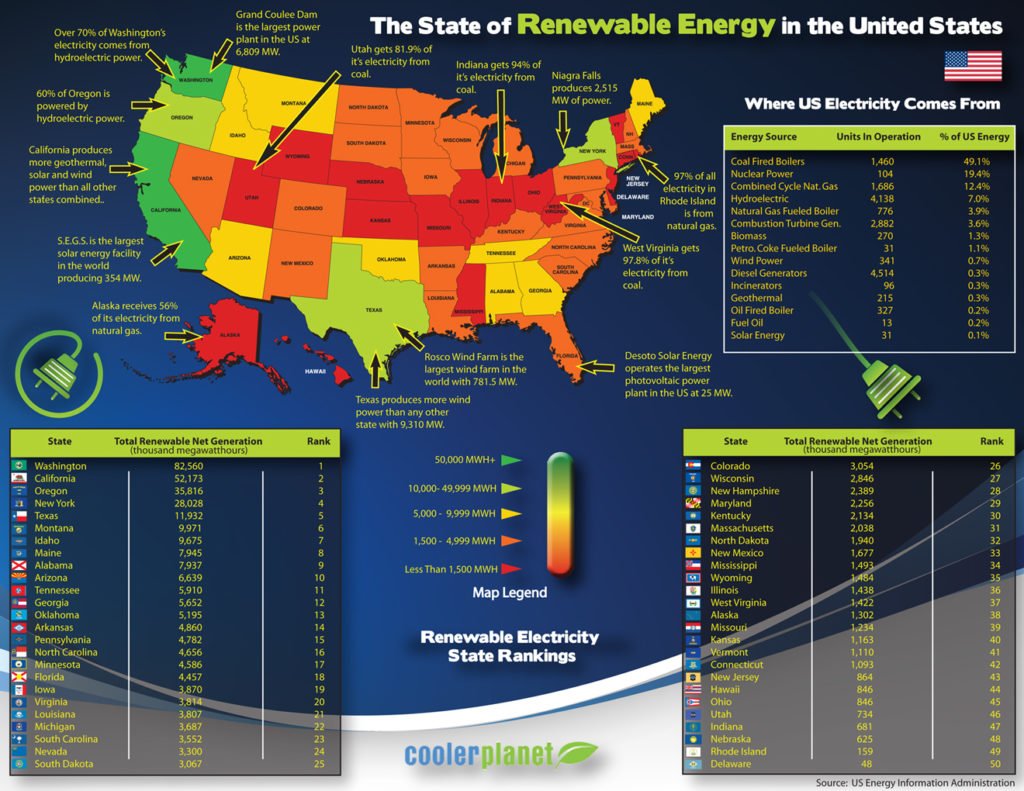
But is this chart really fair? Oddly enough it doesn’t tells us the percentage of Renewable Energy for each state. Luckily, I was able to located another chart showing that.
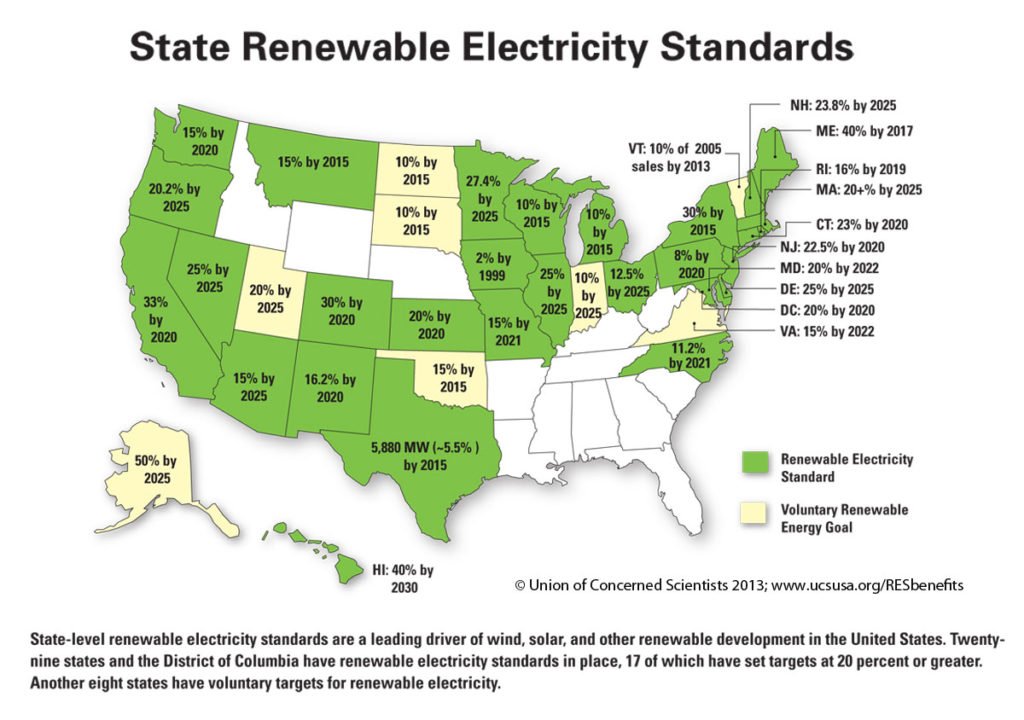
Suddenly, we see small states like Hawaii taking leadership roles when it comes to Renewable Energy, but I cannot explain the discrepancy of Washington showing a meager 15%.
How is the US doing globally?
First, we need to understand who the players in each sector are. The following chart gives us a good idea on that.
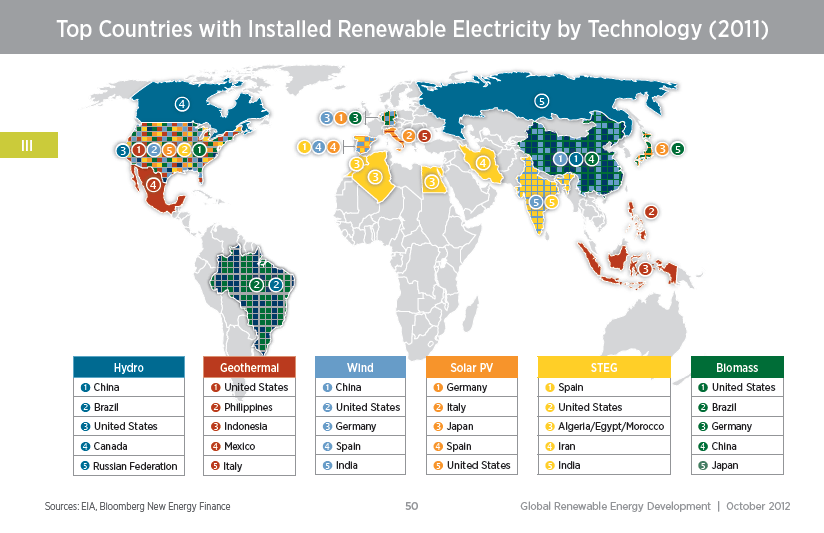
No big surprises here. But who is really putting money into Renewable Energy?
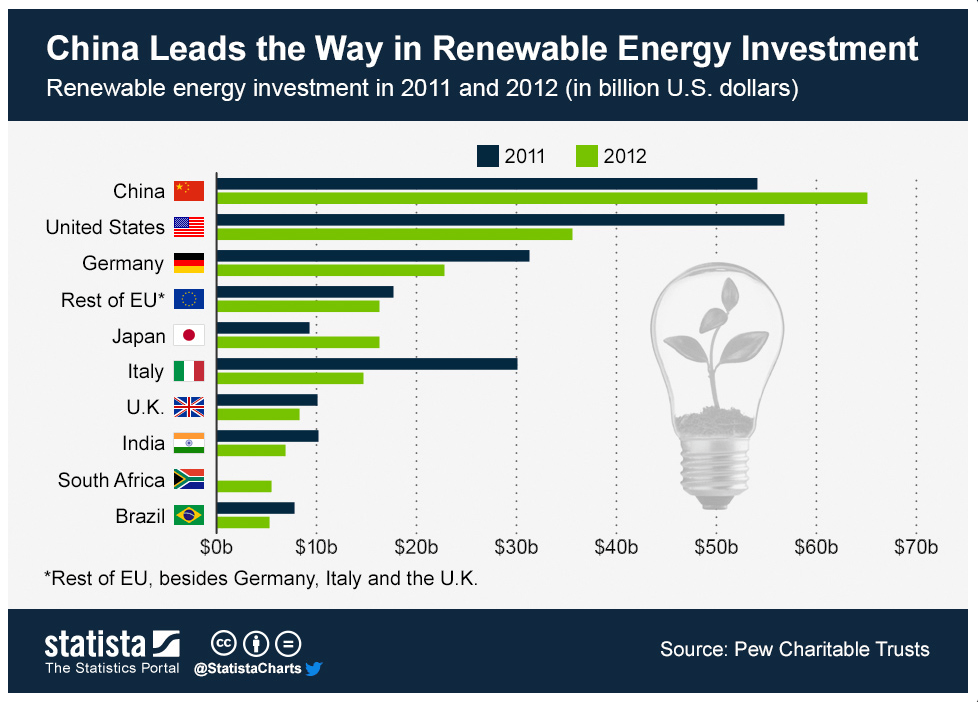
Well, I have to admit that I am surprised to see China on top of this list. But let’s take a closer look on how this chart is broken down. Why did they break down Europe into Germany, Italy, UK and Rest of EU? Not sure why, but it is obvious that a corrected chart would show Europe as being number one in the Renewable Energy market which shouldn’t come as a surprise to anyone. I believe it is a well known fact that most Europeans strongly support alternative energies even if they come at a higher cost for the consumer. Especially, in Germany and Italy, people have become very mindful and supportive when it comes to the environment.
I am hoping that we will all see more of this soon. I mean I would really like to have a house that is somewhat independent of the grid. I also believe that we live in an age where we all need to be more mindful on our impact on the environment. There are so many new technologies that allow us to save energy that doing something for the environment has become an easier task than it used to be. For example, it already makes a difference to switch light bulbs (especially halogen light bulbs) against LED ones.
Sources
Hawaiian Electric Companies
http://www.hawaiianelectric.com/heco/About-Us/Our-Vision/Our-Goals
energy.gov
http://energy.gov/energysaver/articles/ultra-efficient-home-design
MIT – Technology Review
http://www.technologyreview.com/news/534266/hawaiis-solar-push-strains-the-grid/
Hawaii Business
http://www.hawaiibusiness.com/geothermal-is-a-red-hot-topic/
greentechmedia
http://www.greentechmedia.com/articles/read/California-Tells-Utilities-Connect-Battery-Solar-Systems-to-the-Grid